Roberto Proietti
Izhikevich-Inspired Optoelectronic Neurons with Excitatory and Inhibitory Inputs for Energy-Efficient Photonic Spiking Neural Networks
May 03, 2021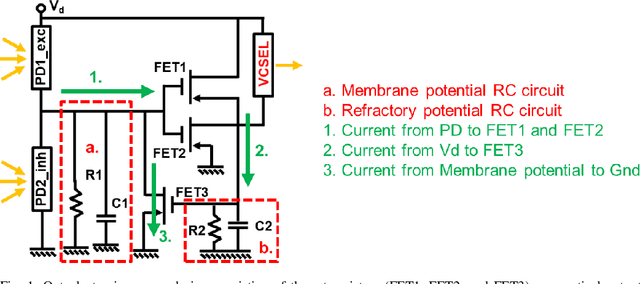
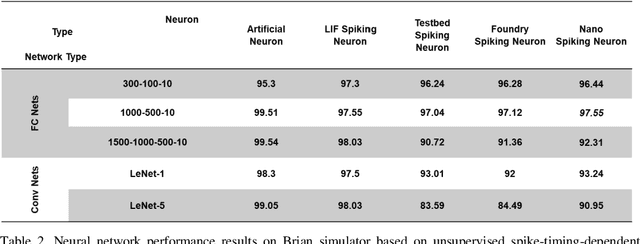
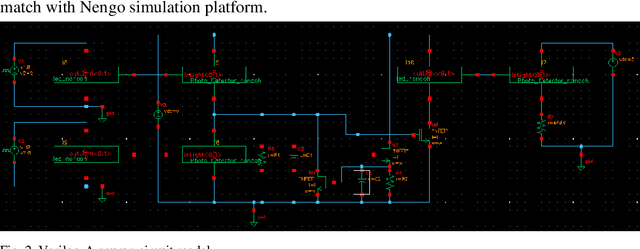

Abstract:We designed, prototyped, and experimentally demonstrated, for the first time to our knowledge, an optoelectronic spiking neuron inspired by the Izhikevich model incorporating both excitatory and inhibitory optical spiking inputs and producing optical spiking outputs accordingly. The optoelectronic neurons consist of three transistors acting as electrical spiking circuits, a vertical-cavity surface-emitting laser (VCSEL) for optical spiking outputs, and two photodetectors for excitatory and inhibitory optical spiking inputs. Additional inclusion of capacitors and resistors complete the Izhikevich-inspired optoelectronic neurons, which receive excitatory and inhibitory optical spikes as inputs from other optoelectronic neurons. We developed a detailed optoelectronic neuron model in Verilog-A and simulated the circuit-level operation of various cases with excitatory input and inhibitory input signals. The experimental results closely resemble the simulated results and demonstrate how the excitatory inputs trigger the optical spiking outputs while the inhibitory inputs suppress the outputs. Utilizing the simulated neuron model, we conducted simulations using fully connected (FC) and convolutional neural networks (CNN). The simulation results using MNIST handwritten digits recognition show 90% accuracy on unsupervised learning and 97% accuracy on a supervised modified FC neural network. We further designed a nanoscale optoelectronic neuron utilizing quantum impedance conversion where a 200 aJ/spike input can trigger the output from on-chip nanolasers with 10 fJ/spike. The nanoscale neuron can support a fanout of ~80 or overcome 19 dB excess optical loss while running at 10 GSpikes/second in the neural network, which corresponds to 100x throughput and 1000x energy-efficiency improvement compared to state-of-art electrical neuromorphic hardware such as Loihi and NeuroGrid.
DeepRMSA: A Deep Reinforcement Learning Framework for Routing, Modulation and Spectrum Assignment in Elastic Optical Networks
May 15, 2019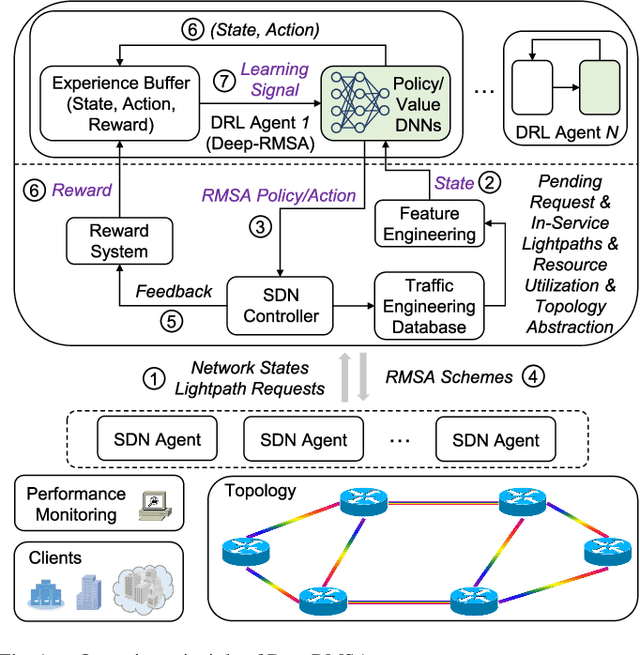
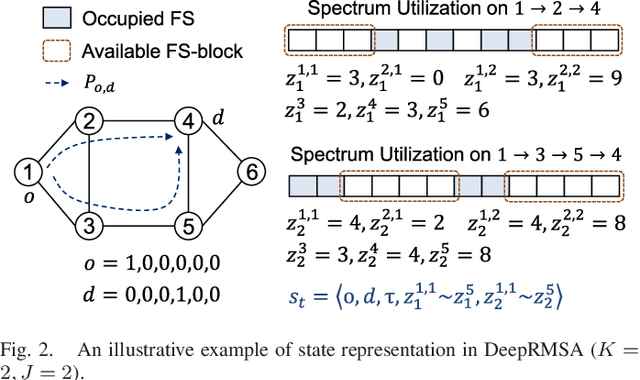
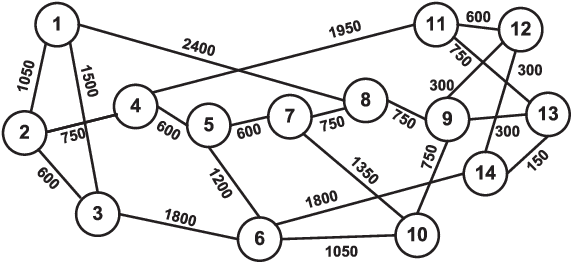
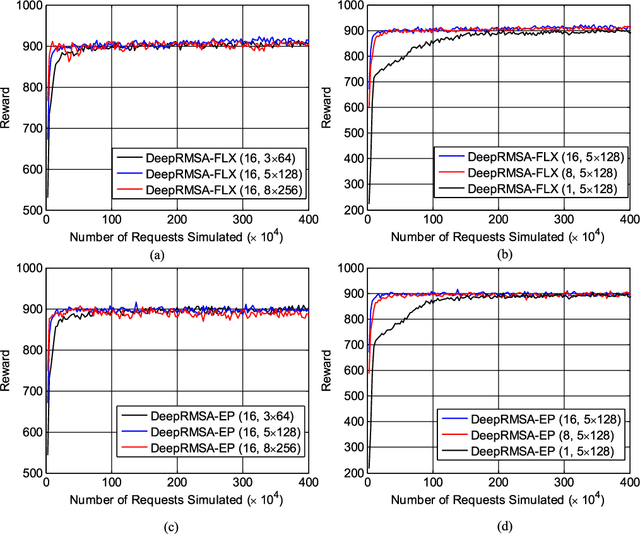
Abstract:This paper proposes DeepRMSA, a deep reinforcement learning framework for routing, modulation and spectrum assignment (RMSA) in elastic optical networks (EONs). DeepRMSA learns the correct online RMSA policies by parameterizing the policies with deep neural networks (DNNs) that can sense complex EON states. The DNNs are trained with experiences of dynamic lightpath provisioning. We first modify the asynchronous advantage actor-critic algorithm and present an episode-based training mechanism for DeepRMSA, namely, DeepRMSA-EP. DeepRMSA-EP divides the dynamic provisioning process into multiple episodes (each containing the servicing of a fixed number of lightpath requests) and performs training by the end of each episode. The optimization target of DeepRMSA-EP at each step of servicing a request is to maximize the cumulative reward within the rest of the episode. Thus, we obviate the need for estimating the rewards related to unknown future states. To overcome the instability issue in the training of DeepRMSA-EP due to the oscillations of cumulative rewards, we further propose a window-based flexible training mechanism, i.e., DeepRMSA-FLX. DeepRMSA-FLX attempts to smooth out the oscillations by defining the optimization scope at each step as a sliding window, and ensuring that the cumulative rewards always include rewards from a fixed number of requests. Evaluations with the two sample topologies show that DeepRMSA-FLX can effectively stabilize the training while achieving blocking probability reductions of more than 20.3% and 14.3%, when compared with the baselines.
 Add to Chrome
Add to Chrome Add to Firefox
Add to Firefox Add to Edge
Add to Edge